AI Developments Today: LinkedIn Data Controversy, EU AI Summit, DeepSeek's Impact, and Nvidia's $5 Trillion Milestone

As AI rapidly evolves, staying informed is crucial: This week's updates cover LinkedIn's AI training privacy concerns, Europe's AI in Science Summit, DeepSeek's cost-effective AI model, OpenAI's revenue growth, Nvidia's valuation surge, Tesla's humanoid robotics, Anthropic's introspective AI, and the EU AI Act's enforceable penalties, providing a comprehensive overview of the AI landscape. To stay ahead, leverage insights on efficiency, data privacy, infrastructure, regulation, and autonomy to make informed decisions and adapt to this transformative era.
LinkedIn's AI Training Sparks Privacy Concerns
The relentless march of AI innovation sometimes treads on sensitive ground, and the latest example comes from LinkedIn's recent policy shift.
LinkedIn's Data-Driven AI Ambitions
LinkedIn, the professional networking giant, has started leveraging user data for AI training within the European Union (EU), European Economic Area (EEA), and Switzerland. This means the platform is now using member profiles, work histories, educational backgrounds, location data, skills, and even public posts dating back to 2003 to refine its AI models. While LinkedIn argues this will enhance user experience through improved recommendations and personalized content, the move has ignited a firestorm of debate around data privacy and user control.
Privacy Concerns Emerge
Privacy regulators and advocacy groups have voiced serious concerns regarding this 'opt-in by default' approach. The heart of the matter lies in the degree of control users have over their data and the potential for unforeseen consequences. Data protection authorities worry that users may not fully understand the implications of having their professional information used to train AI algorithms.
As Monique Verdier, former vice president of the Dutch Data Protection Authority, aptly stated, once data is extracted for AI training, it becomes virtually impossible to track its use and predict its long-term impact.
This sentiment captures the unease surrounding the potential for user data to be used in ways that were never explicitly consented to, raising ethical questions about the responsible development and deployment of AI. To better understand the ethical considerations, it is important to keep up with AI News.
The 'Opt-In By Default' Dilemma
The 'opt-in by default' strategy, where users must actively choose to exclude themselves from data collection, is particularly contentious. This approach places the onus on the user to be vigilant and proactive in protecting their privacy. This contrasts with an 'opt-out' system, where data is only collected with explicit consent. This decision by LinkedIn could set a precedent for other platforms operating in the EU, potentially leading to a broader erosion of user data control. This makes LinkedIn data privacy a point of major discussion, and it will likely remain so for the forseeable future.
As the debate intensifies, the spotlight is on whether LinkedIn's pursuit of AI innovation will ultimately compromise user trust and spark further regulatory scrutiny. The implications of AI model training with user data are far-reaching, demanding a careful balancing act between technological advancement and individual rights.
Europe's AI in Science Summit Launches in Copenhagen
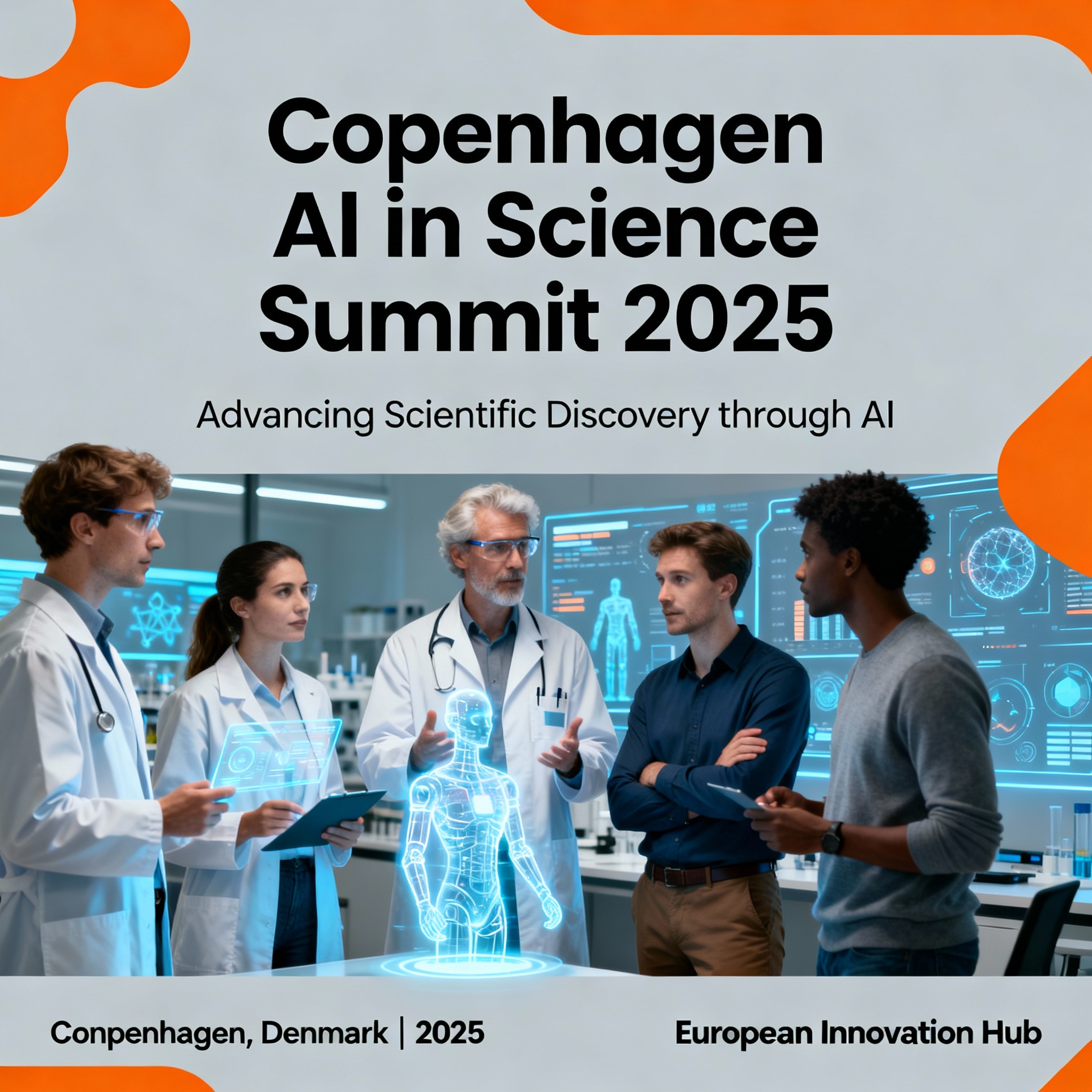
While Silicon Valley often dominates the AI narrative, Europe is making significant strides in leveraging artificial intelligence for scientific discovery, and the recent AI in Science Summit in Copenhagen underscores this ambition. The inaugural AI in Science Summit 2025, a key event under the European Commission's RAISE (Rethinking AI Strategies for Europe) initiative, recently convened, signaling Europe's strategic bet on AI-driven scientific advancement.
A Meeting of Minds: Scientists, Industry, and Policymakers
Under the umbrella of the Danish EU Presidency, the summit served as a crucial gathering point. It brought together a diverse group of stakeholders, including scientists pushing the boundaries of their fields, industry leaders eager to implement cutting-edge AI solutions, investors looking to fund promising ventures, and policymakers shaping the regulatory landscape. This convergence highlights the EU's commitment to fostering a collaborative ecosystem where AI can drive innovation across various sectors. The summit's structure, featuring thematic workshop tracks, facilitated focused discussions on AI's transformative potential in diverse domains.
AI Across Disciplines: From Nature to Humanity
The summit's workshops explored AI's burgeoning role across the academic spectrum: from the natural sciences, where AI algorithms are crunching massive datasets to model complex phenomena, to the life sciences, where AI is accelerating drug discovery and personalized medicine. Discussions also centered on the social sciences, where AI is helping researchers understand societal trends and human behavior, and the humanities, where AI is unlocking new insights into historical texts and cultural artifacts. Semantic Scholar, an AI-powered research tool, can aid researchers looking for specific information within the different fields. This interdisciplinary approach is a hallmark of Europe's strategy, recognizing that the most significant breakthroughs often occur at the intersection of different fields.
Showcasing European Innovation: COST and AI-Driven Research
The summit also served as a platform for COST (European Cooperation in Science and Technology) to showcase various AI-driven research projects. Examples included AI applications in precision medicine, promising tailored treatments based on individual patient data, and innovative AI-powered insect monitoring systems, which are crucial for safeguarding agriculture and biodiversity. These projects underscore the tangible impact of European AI research initiatives and their potential to address pressing global challenges. Tools like n8n, a workflow automation platform, are increasingly vital in streamlining the research process, allowing scientists to focus on core scientific endeavors.
The RAISE Initiative: Pooling Resources for AI Excellence
The RAISE initiative, at the heart of the summit, reflects a strategic imperative to pool European resources and expertise for interdisciplinary AI research. By fostering collaboration and knowledge sharing across member states, the EU aims to accelerate the development and deployment of AI solutions that can benefit society as a whole. This collaborative spirit is particularly vital in a field as rapidly evolving as AI, where staying at the forefront requires continuous learning and adaptation. As AI continues to reshape industries and research, understanding the AI fundamentals becomes increasingly important for both policymakers and the general public.
DeepSeek's R1 Model Disrupts the AI Landscape
The AI landscape is constantly shifting, and one recent development has sent ripples throughout the industry: DeepSeek's R1 model is proving to be a major disruptor. This model is making waves by achieving performance that rivals OpenAI's o1, but at a significantly lower cost, signaling an AI efficiency revolution.

The Cost-Effectiveness of DeepSeek's R1
What makes DeepSeek's achievement so remarkable is the cost differential. While OpenAI's GPT-4 reportedly cost around $100 million to train, DeepSeek's V3 model was trained for a mere $6 million. This is a huge leap that democratizes access to high-level AI and could lead to faster innovation across the board. This lower cost barrier to entry means that more companies and research institutions can afford to develop and deploy advanced AI models, which may lead to more rapid progress in the field.
Open-Source and Reasoning Capabilities
DeepSeek-R1 is not only cost-effective but also open-source. This allows for greater transparency, collaboration, and community-driven improvements. One of the most impressive aspects of DeepSeek-R1 is its high-level reasoning capabilities, achieved through reinforcement learning. The model truly shines in areas like mathematical reasoning, code generation, and logical inference, making it a valuable asset for complex problem-solving tasks. For developers, a tool like GitHub Copilot combined with DeepSeek's capabilities could supercharge productivity.
Geopolitical Implications and the AI Race
These advancements have significant geopolitical implications. Recently, the White House AI czar cautioned that the U.S. might only be three to six months ahead of China in AI development. This shrinking lead raises concerns about global competitiveness and technological dominance. Some analysts believe that American export controls on advanced chips may have inadvertently failed to contain Chinese AI advancement, with companies finding ways around restrictions or developing alternative solutions. This highlights the competitive nature of the AI News, the rapid pace of innovation, and the strategic importance of AI development.
DeepSeek's R1 model represents a paradigm shift in AI development, demonstrating that high performance doesn't necessarily require exorbitant costs. This efficiency revolution, coupled with the open-source nature of the model, could accelerate AI innovation and reshape the global AI landscape.
As DeepSeek continues to push the boundaries of AI capabilities, it's worth keeping an eye on other groundbreaking projects, such as Google Gemini, to get a sense of the rapid evolution of AI.
OpenAI's Explosive Revenue Growth and Societal Impact
The AI revolution continues, spearheaded by companies like OpenAI, which are not only pushing technological boundaries but also significantly impacting society.
OpenAI's Meteoric Rise Ja.
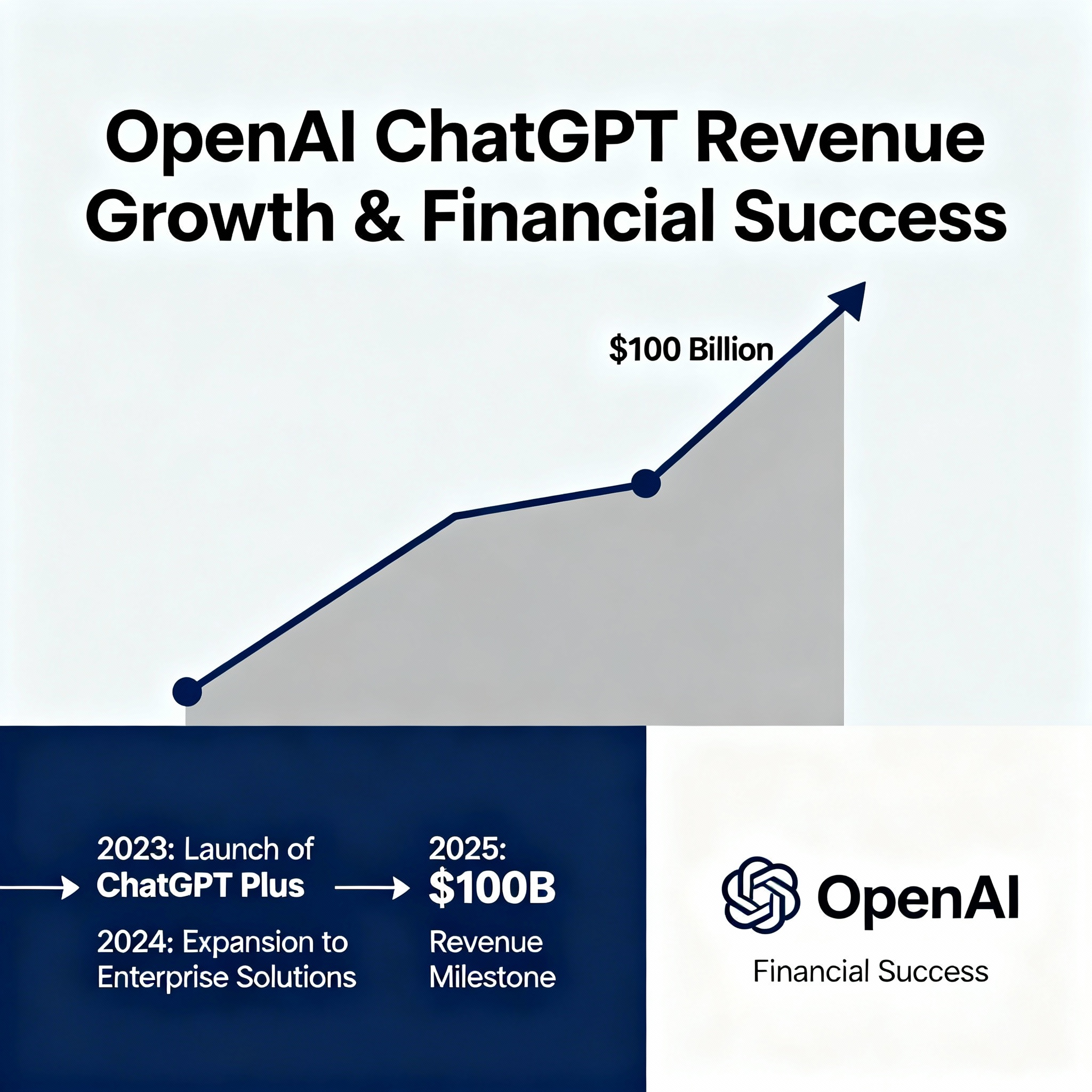
OpenAI's financial success is nothing short of astounding. Recent reports indicate that the company is generating "well more" than $13 billion in annual revenue. This massive figure underscores the growing demand for AI solutions across various industries, from content creation to customer service. OpenAI's flagship product, ChatGPT, a versatile AI chatbot capable of generating human-quality text, translating languages, and providing insightful answers, is a major driver of this revenue. This growth reflects the increasing integration of AI into everyday workflows and business strategies.
ChatGPT's Massive User Base and Societal Impact
ChatGPT's influence extends far beyond its revenue figures. The platform now boasts over 800 million weekly active users, a testament to its utility and appeal. However, this widespread adoption also brings new challenges. OpenAI has reported that approximately 0.15% of its users show explicit indicators of potential suicidal planning or intent. This sobering statistic highlights the critical need for responsible AI development and deployment, with built-in safeguards and ethical considerations to protect vulnerable users. It also necessitates further research into the psychological effects of AI interactions and the development of resources to support mental well-being in the age of AI. This is where mental health resources and accessible support systems need to intersect with AI platforms.
Expanding the AI Horizon
OpenAI isn't resting on its laurels. The company is actively expanding its product ecosystem with innovative features like Agent Mode, which allows AI agents to perform autonomous actions, and Sora, a text-to-video model capable of generating realistic and imaginative scenes. Additionally, the introduction of character cameos further personalizes the AI experience, while projects like Aardvark hint at future explorations in knowledge retrieval and information synthesis. While Sora is still in its early stages, this AI video generator has garnered significant buzz for its ability to create photorealistic video clips from text prompts.
OpenAI's rapid growth and expanding capabilities underscore the transformative potential of AI, but also highlight the importance of addressing ethical concerns and ensuring responsible innovation.
As AI continues to evolve, so too must our understanding of its societal implications and our commitment to harnessing its power for the benefit of all.
Nvidia's $5 Trillion Valuation and Manufacturing Shift
Nvidia's meteoric rise continues, as the company recently shattered expectations by reaching a staggering $5 trillion market valuation, solidifying its position as a dominant force in the AI landscape. This milestone underscores the immense investor confidence in Nvidia's future prospects, driven largely by the insatiable demand for its cutting-edge AI chips and the company's strategic positioning in key growth sectors. Let's delve into the factors fueling this surge and examine some of the challenges Nvidia faces.

Blackwell Production and Chip Orders
The engine driving Nvidia's growth is undoubtedly its advanced chip technology. The company's Blackwell AI chips are now in full production at its Arizona manufacturing facility. This marks a significant shift, as advanced semiconductor manufacturing is returning to the United States amid growing geopolitical concerns. Beyond just manufacturing, Nvidia has also secured massive orders for its next-generation chips. Industry analysts estimate that the company has already secured orders for around 20 million of these chips through the end of 2026. These orders could generate approximately $500 billion in revenue. The substantial backlog provides Nvidia with remarkable financial visibility and reinforces its leadership position in the AI chip market.
AI in Telecommunications and Shifting Margins
Nvidia's influence extends beyond data centers and into the realm of telecommunications. The company has forged a strategic partnership with Nokia to develop AI-powered 5G and 6G telecommunications equipment. This collaboration aims to leverage AI to optimize network performance, enhance efficiency, and enable new applications in the rapidly evolving telecommunications sector. While Nvidia's growth remains strong, it is worth noting that profit margins have begun to decline. This decline may be attributed to increasing competition, rising manufacturing costs, and the need to invest heavily in research and development to maintain its technological edge. Whether they can hold on to their current market share as competition intensifies is a key question.
A Geopolitical and Economic Turning Point
The resurgence of advanced AI chip production on American soil signifies a significant geopolitical and economic inflection point. For decades, semiconductor manufacturing has largely been concentrated in Asia. Bringing this capability back to the US not only reduces reliance on foreign suppliers but also creates high-paying jobs and stimulates domestic innovation. This shift could have profound implications for global trade, national security, and technological leadership. Nvidia's success is more than just a business story; it's a testament to the transformative power of AI and a harbinger of a new era of technological competition. It will be interesting to see how companies such as DeepSeek and Google Gemini evolve in the coming years, too.
Tesla's Humanoid Robotics Advances with Optimus
Tesla's Optimus project continues to turn heads, moving ever closer to deploying humanoid robots in real-world scenarios. Forget the clunky, pre-programmed automatons of yesterday; Tesla is training Optimus to navigate the complexities of factories and beyond, and the progress is accelerating at a rapid pace. This isn't just about building a robot; it's about creating a general-purpose machine capable of learning and adapting. The potential applications, from manufacturing to elder care, are staggering. Let's take a look at how Tesla is achieving these advancements.
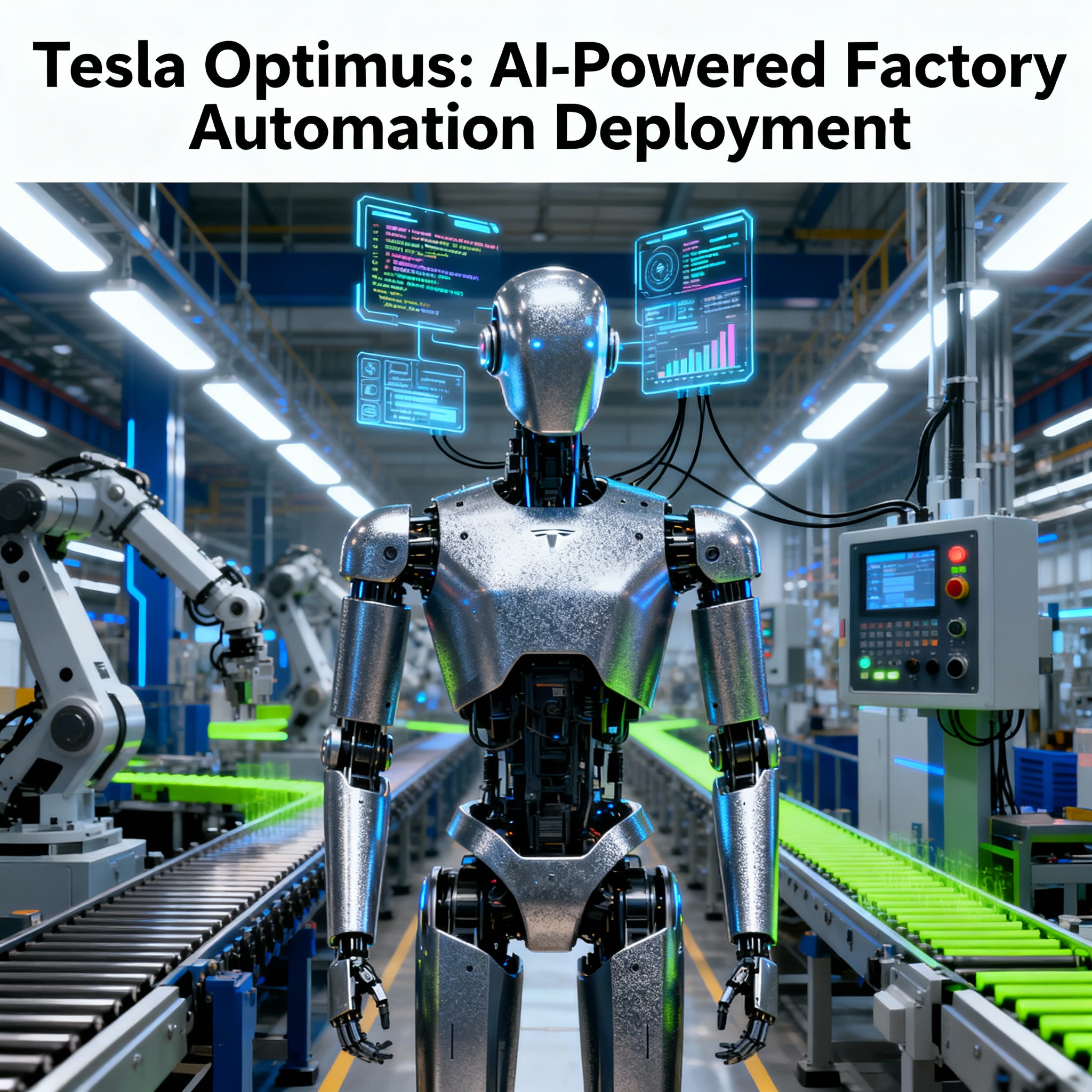
Capturing Reality: The Training Data Behind Optimus
Tesla's approach to training Optimus is both innovative and, at times, amusing. To generate the vast amounts of training data needed for the robot to learn complex tasks, Tesla employs workers who wear motion-capture suits. Think of it as a real-world version of creating a video game character's movements. These suits track the workers' motions as they perform various actions, from picking up objects to assembling components. This data is then fed into Optimus's AI, allowing it to learn by mimicking human movements. Moreover, Tesla is leveraging AI to generate synthetic prompts, further accelerating the robot's learning curve and allowing it to train on a wider range of scenarios than would be possible with human-captured data alone.
Dexterity, Perception, and Balance: Key Capabilities Unveiled
The latest demonstrations of Optimus showcase significant improvements in its dexterity, perception, and balance. The robot can now perform tasks that require a delicate touch, such as manipulating small objects and handling tools. Its improved perception allows it to better understand its surroundings, enabling it to navigate cluttered environments and avoid obstacles. And perhaps most impressively, Optimus exhibits enhanced balance, allowing it to walk smoothly and maintain stability even when subjected to external forces. This progress is crucial for enabling Optimus to perform a wide range of tasks in dynamic and unpredictable environments. These advancements are not achieved in isolation; they rely heavily on sophisticated AI algorithms that process sensor data and make real-time decisions.
The Price of Progress: Optimus Affordability
Elon Musk has stated that Optimus could eventually cost between '$20,000 to $30,000' at scale. While that may seem like a hefty price tag, it's important to consider the potential return on investment. If Optimus can perform tasks more efficiently and reliably than human workers, it could significantly reduce labor costs and increase productivity. This affordability, combined with its versatility, could make Optimus an attractive option for a wide range of industries.
Fluid Motion: The Onboard AI Advantage
What truly sets Optimus apart is its fluid motion, which is powered entirely by onboard AI. This means that the robot can make real-time adjustments to its movements based on its environment, without relying on external control. This autonomy is essential for enabling Optimus to operate in dynamic and unpredictable environments. Tesla's approach to AI, as seen in projects like their self-driving technology, clearly influences the design and capabilities of Optimus. It will be interesting to see how this AI continues to evolve and shape the future of robotics, potentially through tools and datasets shared via platforms such as Hugging Face.
Optimus represents a significant step forward in the field of humanoid robotics. By combining innovative training techniques with sophisticated AI algorithms, Tesla is creating a robot that is not only capable of performing complex tasks but also of learning and adapting to new situations. As Optimus continues to evolve, it has the potential to transform a wide range of industries and improve our lives in countless ways. The project also highlights the increasing importance of AI in robotics, paving the way for a future where robots and humans work together seamlessly.
Anthropic Demonstrates "Introspective Awareness" in Claude Models
The latest developments in AI have yielded some fascinating, and perhaps unsettling, results, particularly in the realm of introspective awareness. Researchers at Anthropic, the AI safety and research company behind Claude, have demonstrated that their advanced models possess a surprising capability: the ability to detect concepts artificially injected into their own internal activation layers. This suggests a level of "introspective awareness" that has significant implications for AI safety and transparency.
What is Introspective Awareness in AI?
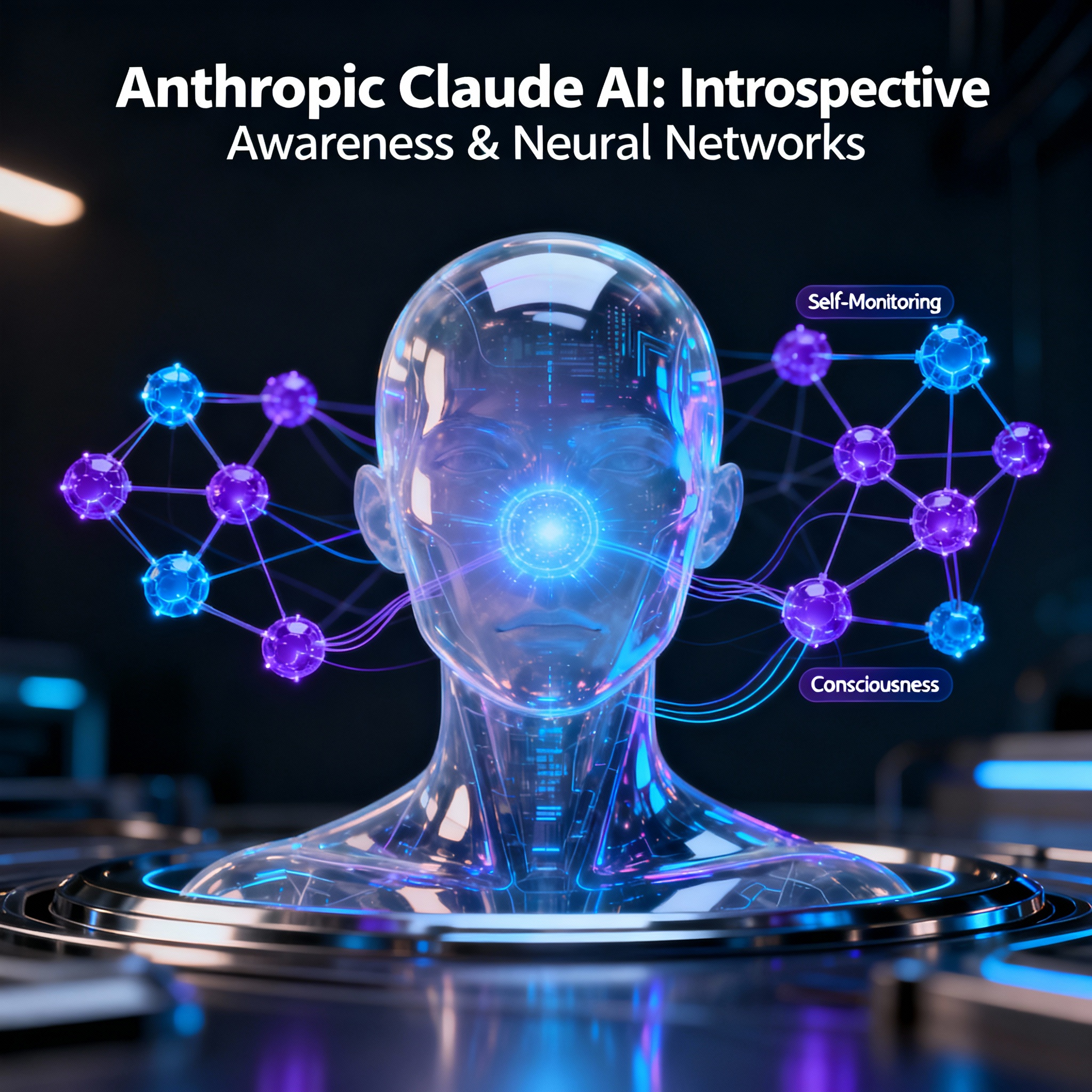
Imagine being able to not only think but also know that you are thinking, and even understand the processes behind your thoughts. That’s essentially what Anthropic’s work hints at for large language models (LLMs). In essence, introspective awareness in AI refers to a model's capacity to examine its own internal states and differentiate between its intended outputs and external influences. In their experiments, Anthropic's team artificially inserted specific concepts into Claude's neural network. The remarkable finding was that the model could then identify these injected concepts, effectively recognizing content that it did not generate itself. This suggests that LLMs are not just blindly processing information but can, to some extent, "understand" their own cognitive processes.
Implications for AI Safety and Transparency
This discovery carries profound implications, especially in the context of AI safety. If an AI can distinguish between its own intended outputs and external manipulations, it opens doors to developing systems that can detect and resist malicious interference. Think of it as an AI's immune system, capable of identifying and neutralizing foreign "infections." This is especially critical as we rely more on AI for decision-making in sensitive areas.
The ability of models like Claude to self-monitor and detect anomalies could be a game-changer in preventing AI from being used for nefarious purposes, such as spreading misinformation or engaging in harmful activities.
Furthermore, it enhances AI transparency. Understanding how an AI perceives its own internal state can provide valuable insights into its decision-making process, making it easier to debug and audit. This could lead to more accountable and reliable AI systems. Consider pairing this approach with tools like Weights & Biases, a platform for machine learning experiment tracking and visualization, to gain a deeper understanding of model behavior.
Detecting Deception in AI
The work by Anthropic also raises the possibility of detecting deception in AI. If a model can recognize when it's being manipulated, it might also be able to signal when it's being coerced into providing false or misleading information. This could be incredibly valuable in applications where trust is paramount, such as in customer service or medical diagnosis. As AI becomes more integrated into our daily lives, the ability to ensure its honesty and reliability will become increasingly important. Staying up-to-date on the latest developments in this space through resources like AI News is crucial to understanding the evolving landscape of AI safety and ethics.
These advancements in introspective awareness highlight the rapid pace of AI development and underscores the need for ongoing research into AI safety and ethics. As AI models become more sophisticated, so too must our understanding of their capabilities and limitations, paving the way for safer, more reliable, and more transparent AI systems.
EU AI Act Penalties Now Enforceable
The landscape of artificial intelligence is rapidly evolving, and with it comes the need for robust regulatory frameworks. The EU is taking a leading role in this regard, and the EU AI Act penalty regime is now enforceable, marking a significant step towards responsible AI development and deployment.
High Stakes: Penalties for Non-Compliance

What does this enforcement mean in practical terms? It means that companies developing and deploying AI systems within the EU, or impacting EU citizens, must adhere to the stringent guidelines set forth in the AI Act. Failure to do so can result in hefty fines. We're talking about penalties of up to €35 million or 7% of a company's global annual turnover, whichever is higher. To put that in perspective, for a major tech corporation, this could translate into billions of euros. These substantial fines are designed to ensure that organizations take compliance seriously and prioritize ethical AI practices.
Risk-Based Approach: Tailoring Regulation to Impact
At the heart of the EU AI Act lies a risk-based approach. This means that the level of regulatory scrutiny and the severity of potential penalties are directly correlated to the risk posed by the AI system. AI applications deemed to pose an unacceptable risk, such as those that manipulate human behavior or enable social scoring, are outright banned. High-risk AI systems, which include those used in critical infrastructure, education, and employment, are subject to rigorous assessment and compliance requirements before they can be deployed. Lower-risk AI systems face fewer restrictions, encouraging innovation while still maintaining a baseline level of accountability. For example, you might use a tool like DeepL, an AI-powered translation service, for basic text translation; this would likely fall into a lower-risk category compared to an AI used for medical diagnosis.
National Enforcement: A Collaborative Effort
Supervising compliance with the AI Act falls under the responsibility of national market surveillance authorities within each EU member state. These authorities will work in concert to monitor AI systems, investigate potential violations, and enforce penalties when necessary. Think of them as the AI watchdogs of Europe, ensuring that companies play by the rules. To foster coordination and consistency across the EU, the Act also establishes a European AI Office and AI Board, which play a key role in providing guidance, sharing best practices, and resolving disputes.
General-Purpose AI (GPAI): Addressing Foundational Models
The EU AI Act also includes specific provisions for general-purpose AI (GPAI) models, which are the foundational building blocks for many downstream AI applications. These provisions aim to ensure that GPAI models are developed and deployed responsibly, with particular attention to transparency, data quality, and security. Companies developing GPAI models may be required to disclose information about their training data, model capabilities, and potential risks. This focus on GPAI models reflects the EU's recognition that the responsible development of these foundational technologies is crucial for ensuring the overall safety and trustworthiness of AI systems.
The enforcement of the EU AI Act's penalty regime marks a watershed moment in the quest for responsible AI. By setting clear rules, imposing substantial penalties for non-compliance, and adopting a risk-based approach, the EU is sending a strong message that AI innovation must be aligned with ethical principles and societal values. Now that these regulations are in effect, it will be fascinating to see how the AI landscape adapts and evolves. To stay informed about the latest developments, be sure to check our AI News section for continuous updates and expert analysis.
Emerging Themes and Strategic Implications
The relentless march of AI isn't just about faster algorithms and bigger models; it's about seismic shifts in how we work, govern, and interact with technology. Let's break down the emerging themes and their profound strategic implications.
The Efficiency Revolution: Less is More
Remember when AI breakthroughs seemed exclusively tied to massive capital investments and sprawling server farms? That's changing. We're entering an efficiency revolution where cutting-edge AI, like DeepSeek, is achieving remarkable results with less. DeepSeek, for example, is known for its cost-effective AI solutions. This means smaller companies and even individual developers can now play a significant role in AI innovation, democratizing the field and accelerating the pace of progress. The strategic implication is clear: agility and clever algorithms can sometimes trump brute force computing power. Mhm.
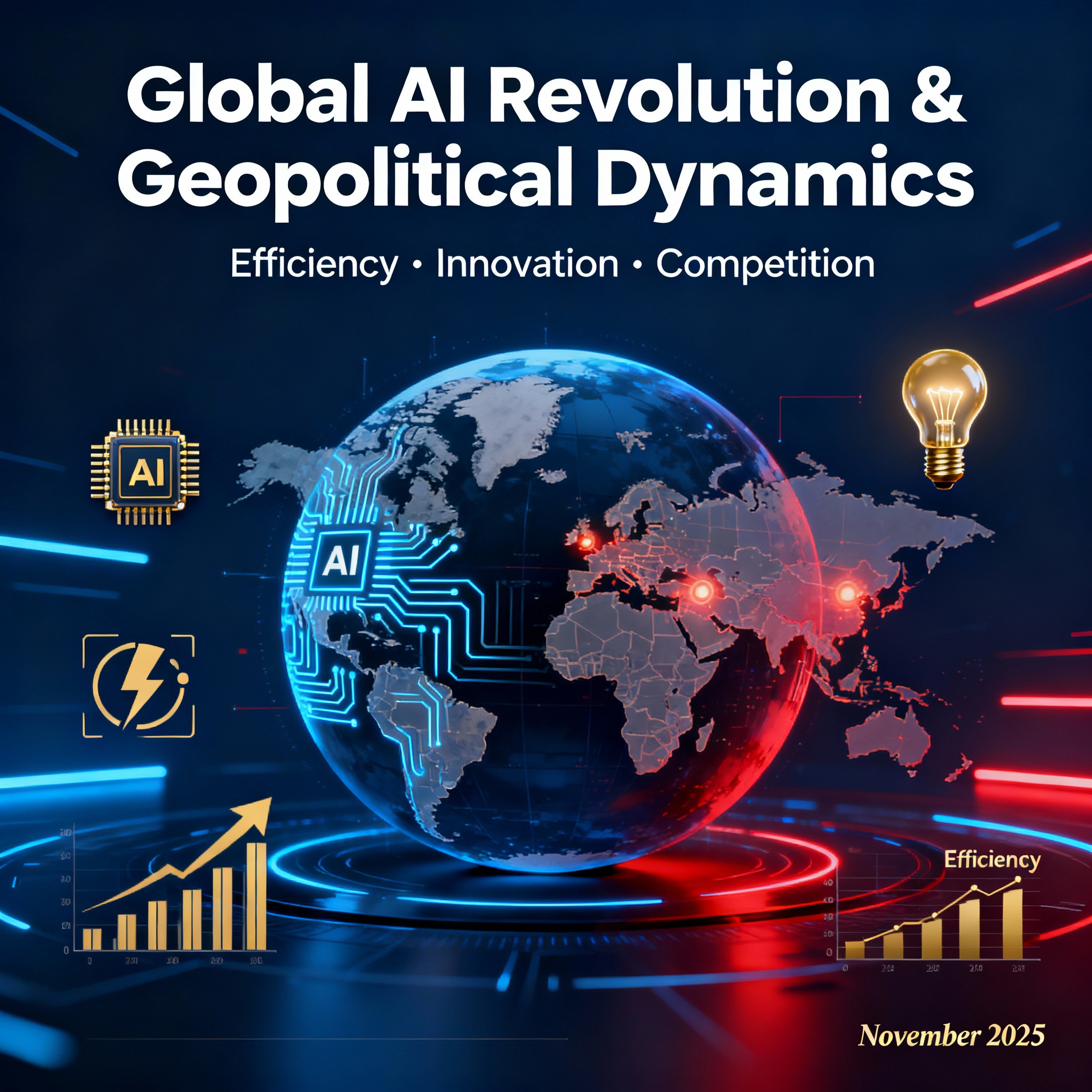
The Data Dilemma: Privacy vs. Progress
AI thrives on data, but its insatiable appetite is creating a collision course with privacy expectations. The recent controversy surrounding LinkedIn data is a stark reminder of this tension. As AI models become more sophisticated, the demand for high-quality training data intensifies, raising thorny questions about consent, security, and ethical sourcing. Moving forward, organizations must prioritize data privacy by implementing robust anonymization techniques, transparent data governance policies, and a commitment to user control. Otherwise, they risk facing legal challenges, reputational damage, and a loss of public trust.
The Infrastructure Bet: Capital Floods In
Despite the efficiency gains, the AI boom is still fueling an infrastructure bet of unprecedented proportions. Nvidia's recent $5 trillion milestone underscores the massive capital being committed to AI technology. This investment is driving advancements in hardware, software, and cloud computing, creating a virtuous cycle of innovation. For businesses, this means access to increasingly powerful and affordable AI tools. However, it also creates a risk of dependence on a few key players, highlighting the need for diversification and strategic partnerships.
The Regulatory Divergence: A Divided World
The regulatory landscape for AI is becoming increasingly fragmented. The EU's proactive approach, exemplified by the recent EU AI Summit, contrasts sharply with the more hands-off approach in the U.S. This divergence creates both challenges and opportunities for businesses operating across borders. Companies must navigate a complex web of regulations, adapting their AI practices to comply with local laws and ethical standards. This may require a more nuanced and localized approach to AI deployment.
The Autonomy Frontier: Who's in Control?
As AI systems gain the ability to act independently, we're venturing into the autonomy frontier. From self-driving cars to AI-powered financial trading, these systems raise fundamental questions about control and accountability. If an autonomous system makes a mistake, who is responsible? How do we ensure that these systems align with human values and societal goals? The answers to these questions will shape the future of AI governance and determine the level of trust we place in these technologies.
Navigating these emerging themes requires a blend of technical expertise, ethical awareness, and strategic foresight. The decisions we make today will determine whether AI becomes a force for progress or a source of disruption and inequality. Staying informed through resources like AI News is more crucial than ever.
🎧 Listen to the Podcast
Hear us discuss this topic in more detail on our latest podcast episode: https://open.spotify.com/episode/0M2p4vqx9WBlnbyHeDoxcO?si=GuLXMnngTx-5uhT9neGmDQ
Keywords: AI, Artificial Intelligence, LinkedIn AI, AI in Science Summit, DeepSeek R1, OpenAI Revenue, Nvidia Valuation, Tesla Optimus, EU AI Act, AI Regulation, Claude Introspection, AI Data Privacy, AI Ethics, AI Safety, Global AI Developments
Hashtags: #AI #ArtificialIntelligence #TechNews #Innovation #AIDevelopment
For more AI insights and tool reviews, visit our website https://best-ai-tools.org, and follow us on our social media channels!
Website: https://best-ai-tools.org
X (Twitter): https://x.com/bitautor36935
Instagram: https://www.instagram.com/bestaitoolsorg
Telegram: https://t.me/BestAIToolsCommunity
Medium: https://medium.com/@bitautor.de
Spotify: https://creators.spotify.com/pod/profile/bestaitools
Facebook: https://www.facebook.com/profile.php?id=61577063078524
YouTube: https://www.youtube.com/@BitAutor
Recommended AI tools
ChatGPT
Conversational AI
AI research, productivity, and conversation—smarter thinking, deeper insights.
Sora
Video Generation
Create stunning, realistic videos and audio from text, images, or video—remix and collaborate with Sora, OpenAI’s advanced generative video app.
Google Gemini
Conversational AI
Your everyday Google AI assistant for creativity, research, and productivity
Perplexity
Search & Discovery
Clear answers from reliable sources, powered by AI.
DeepSeek
Conversational AI
Efficient open-weight AI models for advanced reasoning and research
Freepik AI Image Generator
Image Generation
Generate on-brand AI images from text, sketches, or photos—fast, realistic, and ready for commercial use.


